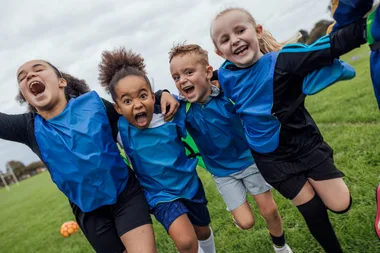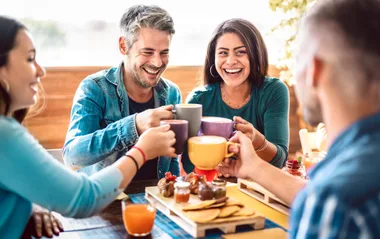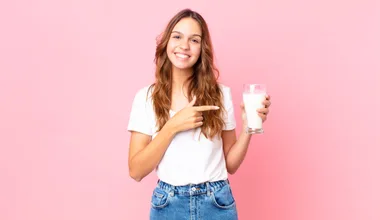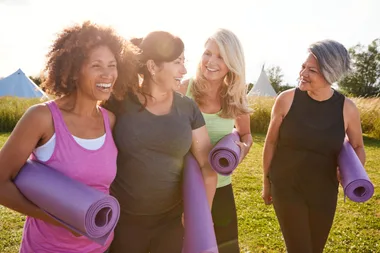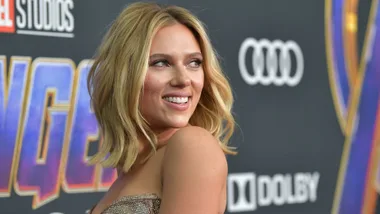A woman gets cancer and loses her hair. She feels miserable and her friends completely understand. They rally around, offering to go wig shopping with her.
A woman gets breast cancer and loses her breast. That is much more serious – it’s a brutal operation and the breast, unlike the hair, will never come back. The woman feels miserable, but when she mentions this to friends, they say, “What are you talking about? You’re alive! Who cares if you have breasts or not? Don’t even worry about it.”
The thing is, though, some women do worry about it.
“There is this idea out there that a woman who survives breast cancer is just meant to feel grateful,” says Louise Turner, 43, a mother of two who had a double mastectomy in 2013.
“But I would like to have a deeper conversation about women’s rights after breast cancer. Is it okay that my body will be disfigured? Do I really have to accept that and not quibble about it? Is it really just vanity for me to say I would like to feel whole again?”
The issue of what a woman should – and shouldn’t – think about her body after a mastectomy came up for The Weekly at the launch of Krystal Barter’s book, The Lucky One. Krystal carries the BRCA1 gene, which puts her at a high risk of breast cancer. Her mother and grandmother also had breast cancer, which heightens her risk again. At age 25, she opted to have both breasts removed.
“I had no trouble saying, ‘I don’t want my breasts anymore’,” Krystal says, “but I also wanted breast reconstruction and I am happy with the result. I know there are women out there who are stressed about what they are going to look like and I don’t want them to think that if they have this preventative surgery, they will never again feel beautiful.”

Krystal wanted The Weekly to photograph her in a way that would show off her figure because she had a point she wanted to make. “Women are embracing their scars and celebrating the fact that they are alive, even if they are scarred, and that’s fantastic, but my charity, Pink Hope, is all about prevention,” Krystal says.
“It’s about encouraging women who have the BRCA gene to consider having their breasts removed so they don’t get cancer and my worry is that young women might look at these photos and think, ‘I’m not going to have my breasts removed because you end up looking awful’. But you don’t have to look awful. You can look great.”
The Weekly was hesitant. If this magazine is for anything when it comes to women, we’re for courage. That can be courage in the face of the loss of a child, in confronting discrimination at work, in building a business and, of course, in confronting cancer. No woman should feel that she needs to be “rebuilt” after a mastectomy, or undergo extra surgery to be “made whole” again.
That said, The Weekly is also for freedom – to get married or not, to have a baby or not, or to have a breast reconstruction after cancer surgery or not.
To that end, The Weekly photographed Krystal in a popular T-shirt – “Yes they’re fake! (My real ones tried to kill me)” – that seemed to exemplify her message. We also took some nude shots. Krystal has no nipples – despite what you might read, it’s difficult to find a surgeon who can save your nipples during a mastectomy and reconstruction – and she has some scars, but her breasts are a lovely shape and that’s no accident, either.
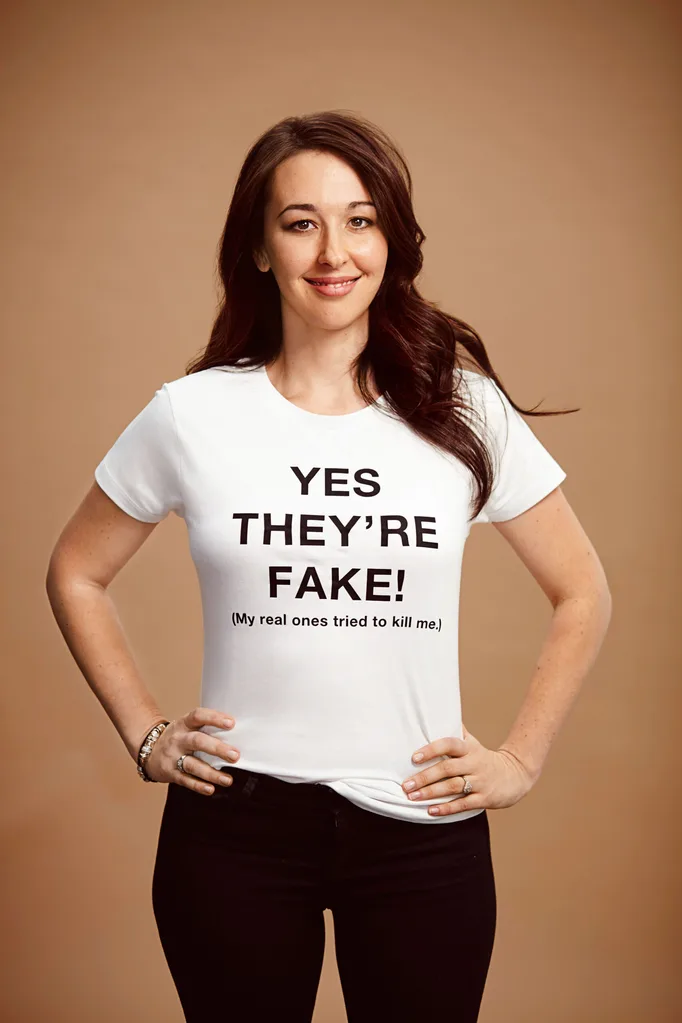
“I’d already had two children when I decided to have this operation and my breasts were small and droopy, like teabags,” Krystal says. “I wanted an upgrade and the first implants I had were disappointing.” Then one flipped – literally, turned over under her skin – so she went back and got a bigger set “better than before. I wanted a cleavage. And I’ve got one. I don’t ever have to wear a bra if I don’t want. And that’s my message: you can take this action – preventative action – and end up looking maybe better than you did before.”
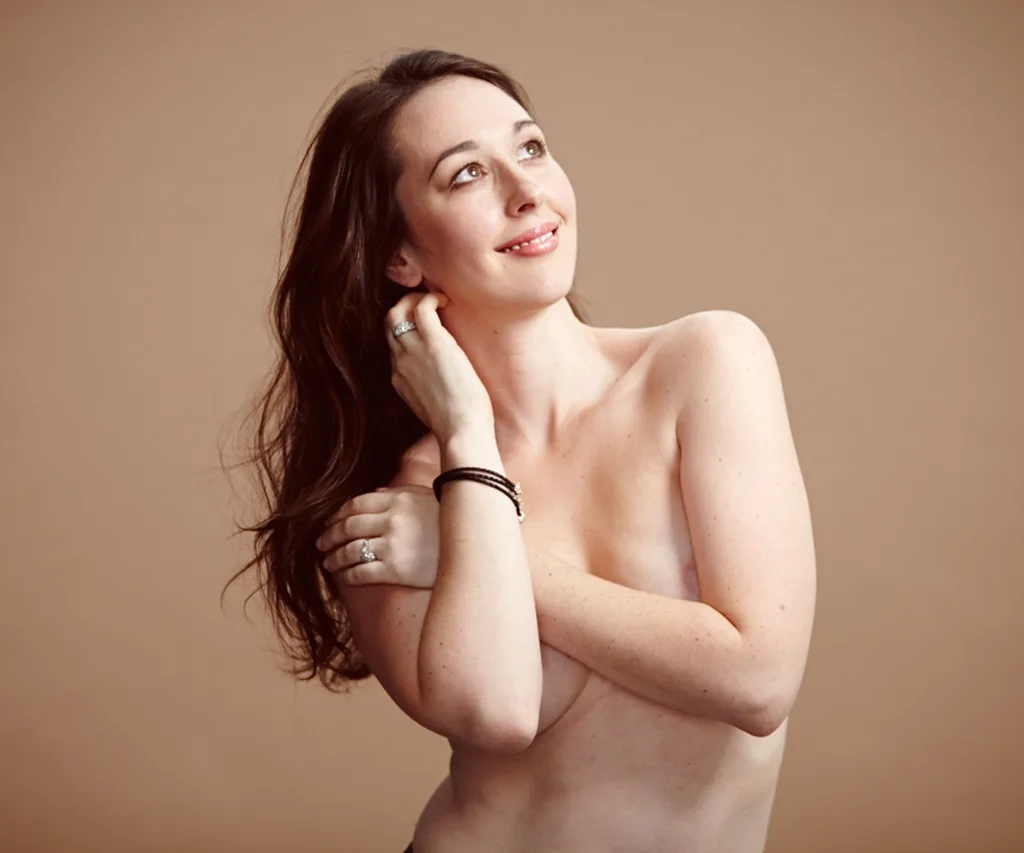

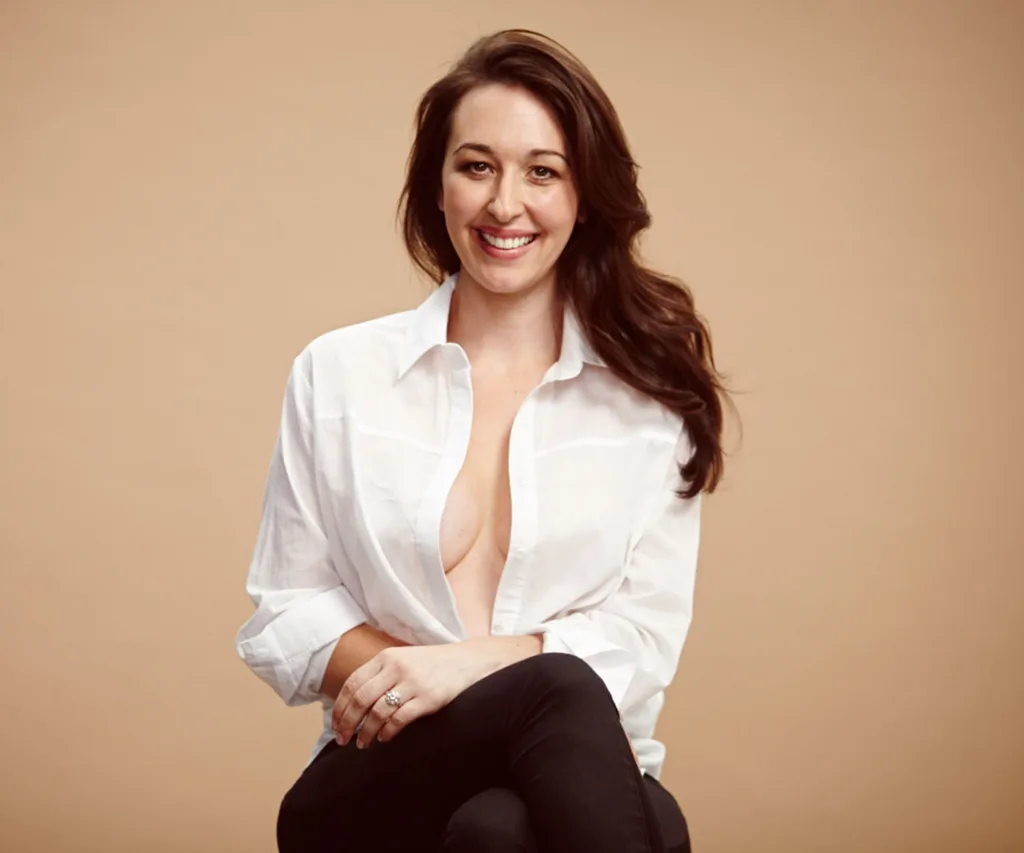
To balance the ledger, The Weekly also interviewed women who chose not to have a reconstruction after breast surgery. Judith Pippen was diagnosed with two cancers in her left breast in 2011. She had both breasts removed and decided against implants.
“I was given all the options and this was my choice,” Judith says in a happy voice of the type you often hear in women of a certain age whose children are all grown up. “I was given the option of keeping one breast, but it was risky and I didn’t like the aesthetic of having just one. I was also 65 years old and I felt that my breasts had done their work in feeding and seduction – if I ever did use them to seduce anyone!
“I accepted there would be no breasts when I woke up. I know some women dread that, but I was fine with it and I suppose I’ve become even more confident in my decision as time has gone on.”
Judith has met women who have had a reconstruction, “and it has meant quite a few extra operations and there are horror stories about implants – not being able to get them to balance, or developing infections – and I feel quite glad that I made the decision I did.”
Deciding against a reconstruction has meant that Judith is what she describes as an odd shape. “I’m narrow at the top now and wide around the hips. It’s not an easy shape to dress and I’m not going to say I don’t care. When I put clothing on, I do try to dress in a way that will make me feel elegant and okay.”
She was offered a set of chicken fillets – “huge rubber inserts, the weight and size of five dead fishes” – to stuff into her bra, but she doesn’t bother with them. “I’d always had big breasts – I was an 18DD – so that was four kilos of inserts I’d have to lug around,” she says. “I can live without that. I might choose a soft scarf, or a shirt with a pleated upper feature – that can look quite flattering. I do give it a lot of thought and I am conscious of wanting to look nice.”
Judith says her husband of 30 years “is probably a boobs man, so I waited a few days before I showed him the scars. It wasn’t easy, but I did the unveiling ceremony. And he bent down and kissed the scars! He was just gorgeous. And I watched – you know how you watch to see if there is really some revulsion in their eyes? I was watching very, very closely. And there was nothing. No revulsion. And when you’re in those situations, to see love in the eyes of the people who mean the most to you, well, that’s what matters.”
She has since had the area where her breasts used to be tattooed with a design that means something to her. “It was agony, pure agony, being 10 hours under the needle. But I survived breast cancer and I wanted to celebrate that.”
Louise Turner made a different decision. She chose to have a reconstruction. “Cancer is difficult. Even when you survive, it totally changes your life,” she says, “and with the cancer I had, there was never a time when I thought I was going to die. But I did have a huge fear of being disfigured. The thought of living without breasts, to me, was really, really distressing. But getting back what I had was important. It is shocking to me that many women are not offered the choice to have a reconstruction, not immediately and not ever. They are made to feel like they are being silly, or that they should just be grateful to be alive.”
The proportion of Australian women who have a reconstruction after a mastectomy is very low: fewer than 12 per cent have it done, compared with 25 per cent in the UK and 40 per cent in the US.
Louise opted to have her breasts reconstructed using her own tissue. She says her new breasts have a nice shape, but she has no feeling in them or at the “donor site” (where flesh was carved from her stomach to make the breasts). She lost her nipples and still needs another operation to have nipples reconstructed.
“So now I’m in that space that many women get into, where they feel, ‘Oh, should I really go back? I don’t look that bad. This cancer has taken up a lot of time already. Maybe it’s selfish to try to get a better result.’ That is the guilt that many women feel and so they carry on, trying to be cheerful, even when they feel miserable.
“But as a woman with breast cancer, I believe it is arrogant for people to tell me that I should just be happy to be alive. I have heard of women basically being patted on the head and told, ‘Let’s deal with the cancer, you poor little lady, and down the track, one year or five years from now, you can worry about how you feel.’ And women are expected to say, ‘Yes, I’ll do what the good doctor says because it’s vain and silly to worry about how I look when he’s saving my life.’ Or else women are criticised for wanting to have a reconstruction for their husbands, or to look good to other people. But I didn’t have my reconstruction for my husband, or for anyone else. I had it for me.”
Breast Cancer Network Australia chairwoman Marg O’Donnell, like The Weekly, urges women to make the decision that suits them best. She was diagnosed with breast cancer in 2003 and again in 2011, after which she had one breast removed. She hasn’t had a reconstruction.
“I was given a couple of choices: have one breast off, have both off; have a reconstruction straight away, or later, or not at all,” says Marg. “I went and saw a plastic surgeon in Brisbane who said – and I’m paraphrasing – ‘But you’re old! Why do you need a reconstruction?’ Which infuriated me and made me think, well, whatever I decide, I won’t be coming back here. Then I realised I was in no coherent state to make a decision before the mastectomy, so I went in, had the one breast off and I’ve left it at that, and it’s fine.
“I’d always had big breasts. I had a pretty impressive cleavage, if I do say so myself. I didn’t flash it around a lot – but I had the option. But I also had a bit of an annoyed relationship with my breasts. I would play netball and they would jiggle around. They were good for breastfeeding, but those days were over.
“So my thought was, if I have the reconstruction, that’s six or eight hours under anaesthetic to rebuild a breast to a size that I was never all that keen on in the first place. I could get the other side reduced and get a smaller reconstruction, but they wouldn’t look like my breasts. I was going to lose my nipple either way. You can tattoo a nipple on the implant, but it doesn’t look particularly real. The implants don’t feel real. So, in the end, I went with none of the above. Having a cleavage wasn’t enough of a reason. I don’t like having unnecessary surgery or pain. I’m past child-bearing. I’m past seeing myself as a sex object, if I ever did, and although people said I might feel off-balance with just one large breast, I don’t.
“I have a prosthetic, which cost about $450 [you can get about $400 back], and a proper bra to put it in, but to be honest, I often wear a normal bra and put socks down. It’s light, it’s cool. I live in Brisbane, where it’s hot, and when I swim, I don’t wear anything and nobody seems to be mind. So that’s been my decision: I didn’t want to go through another surgery.
“Which isn’t to say that I’m opposed. If you want a reconstruction and it’s within your means – go for it. All women should be able to do exactly what they want. It’s just that for me, personally, I’m a bit of a wuss.”
Are you at risk of developing cancer? The Pink Hope Online Risk Assessment Tool can let you know in just five minutes. Click here to take the Know Your Risk test.


